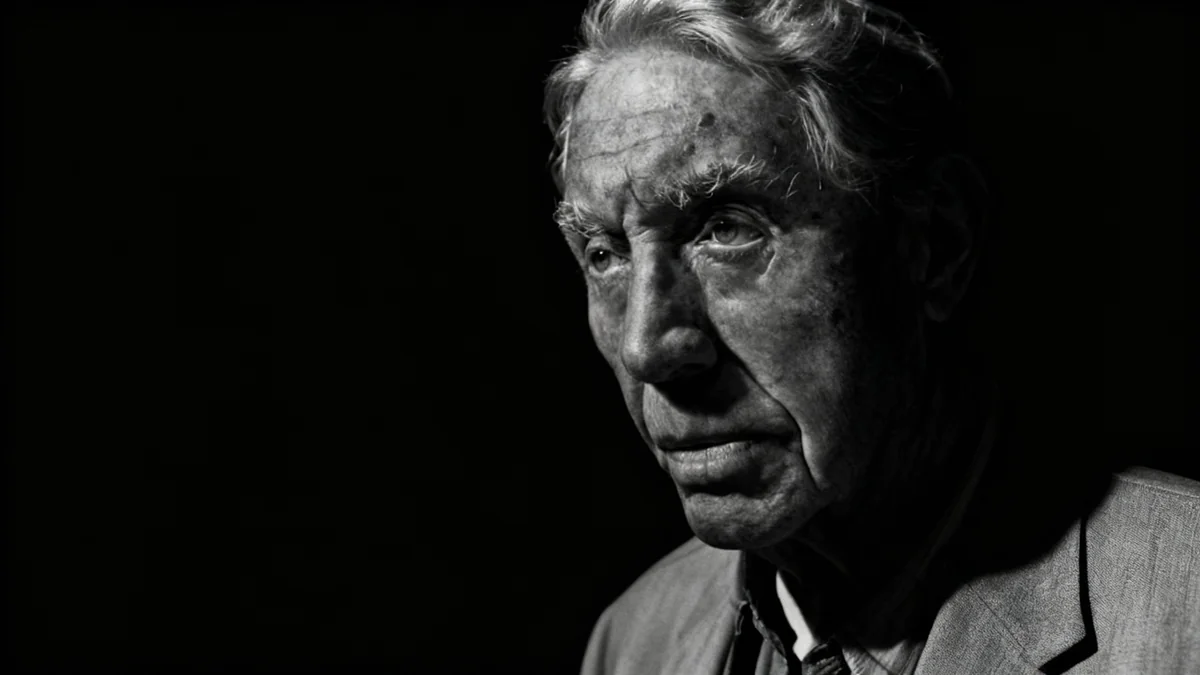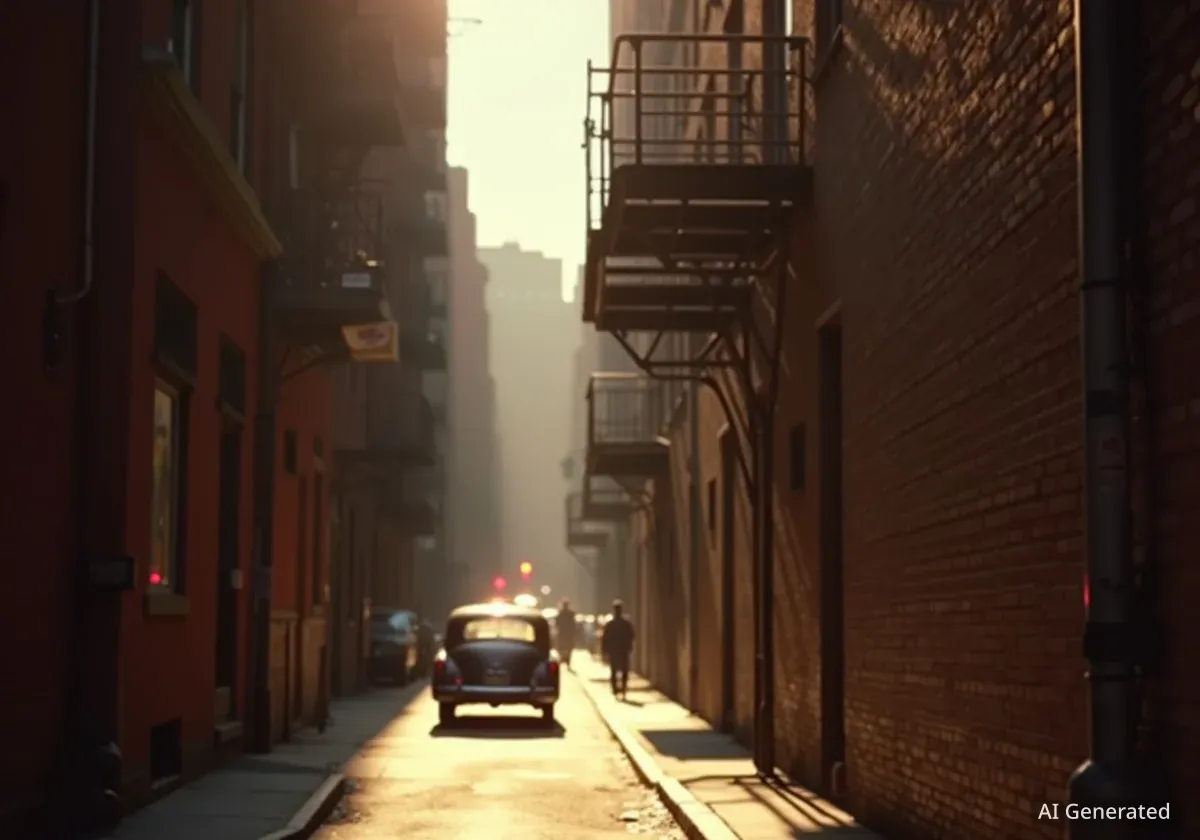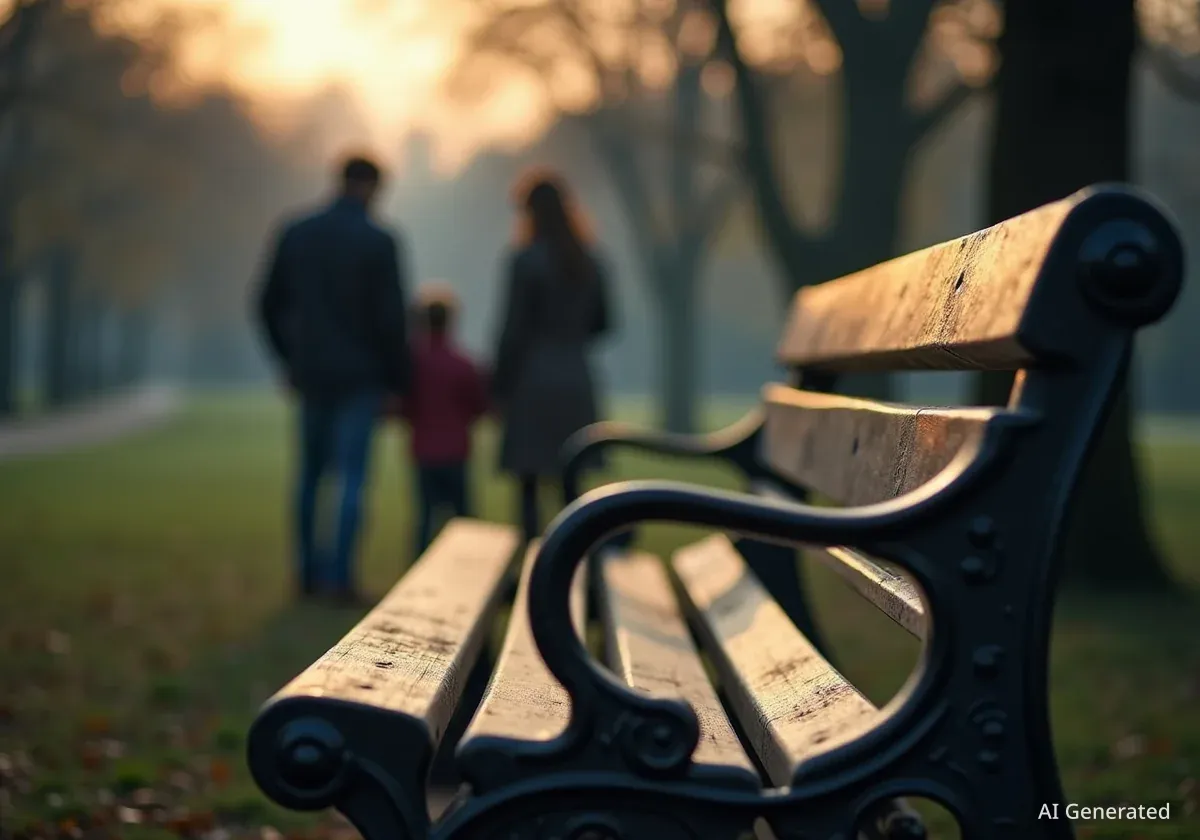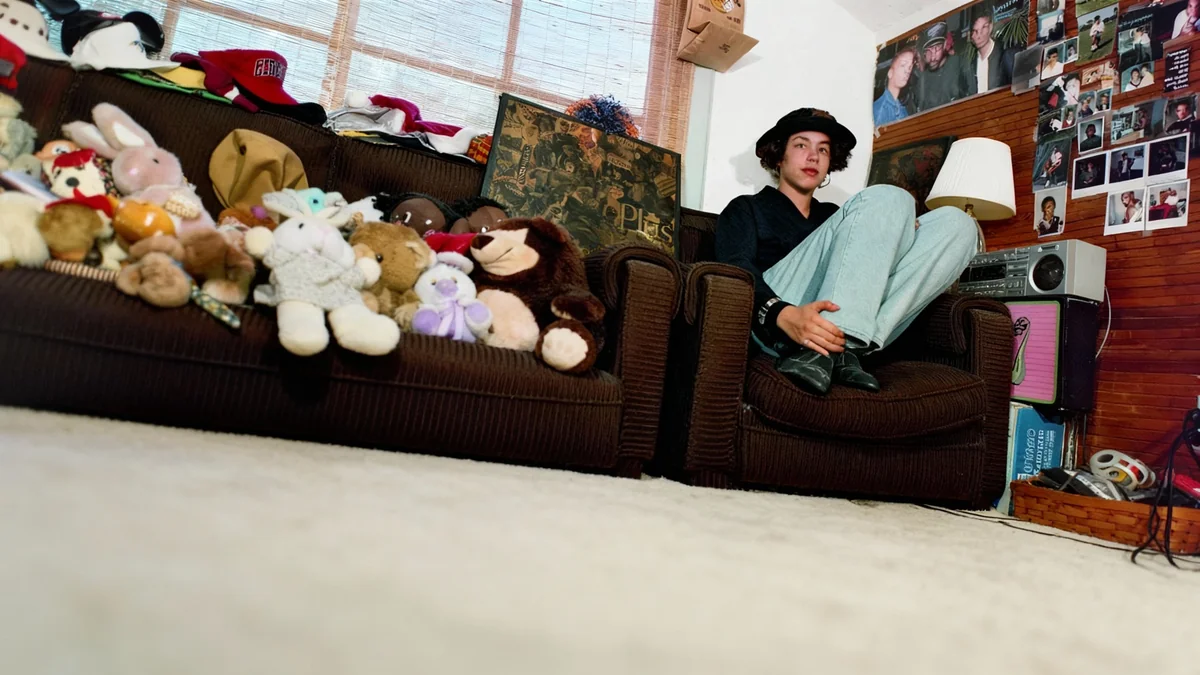Don McCullin, the acclaimed war photographer, recently offered a rare and candid look back at his seven-decade career. Now 90 years old, McCullin shared insights into the profound impact of documenting global conflicts, famines, and societal struggles, expressing a deep sense of unease despite his numerous accolades, including a knighthood in 2017. His work, which began 67 years ago, spans a wide range of genres beyond the harrowing war zones he is best known for, including landscapes, portraits, and ancient ruins.
Key Takeaways
- Don McCullin, 90, reflects on 70 years of conflict photography.
- He expresses discomfort with accolades, feeling he has 'ridden on other people's pain.'
- McCullin believes his work has not changed the course of conflict.
- His career began with documenting London street gangs and expanded globally.
- He finds solace in photographing English landscapes, a release from war's guilt.
Early Life and the Genesis of a Career
McCullin's journey began in the challenging environment of north London. He grew up in a damp, two-room basement in a tenement building. His father passed away when McCullin was just 14, leading him to leave school shortly after. It was during his national service with the Royal Air Force that he first discovered photography.
His career officially started at 23 with a photograph of a Finsbury Park gang, a group he grew up with. This image was published in the Observer newspaper in 1958, marking the beginning of an extraordinary path.
A Different Childhood
McCullin recalls a childhood shaped by post-war London. He was evacuated three times during the war, returning each time to a more derelict city. He remembers climbing bombed buildings, which felt like 'climbing inside cathedrals,' and finding adventure by taking trains to the countryside to catch grass snakes and birds' eggs. He notes that children today do not experience such a life.
Despite his later fame, McCullin often felt like an 'impostor' due to his lack of formal education and his upbringing surrounded by violence and bigotry. He traveled to Sudan, Egypt, and Cyprus with the RAF, which broadened his perspective and helped him develop his own mindset.
Venturing into Conflict: Berlin and Cyprus
By the early 1960s, McCullin was freelancing, contributing to the Observer and other publications. In 1961, while on a belated honeymoon in Paris, he saw a newspaper image of an East German soldier in Berlin. This sparked his decision to go to Berlin, even without an official assignment from the Observer.
He arrived with a basic Rolleicord camera, a stark contrast to the sophisticated equipment carried by other international photographers. This experience highlighted his humble beginnings in photojournalism.
"I saw other international photographers arriving, draped in all the latest cameras and I remember feeling shabby."
His first official war coverage came in 1964 during the Cyprus civil war. He vividly remembers his first day in Limassol, where he photographed a Turkish gunman. This initial experience in a war zone was his 'baptism in war.'
A Moment of Humanity
During a gun battle in Cyprus, McCullin risked his life to carry an elderly woman to safety. He reflected on this act, stating, "I can't keep taking all the time. You've got to do something, give something back." This sentiment would recur throughout his career.
He recounts discovering a house where two brothers and their father had been murdered by Greeks. While photographing the scene, family members entered, crying for their loved ones. Despite his fear of attack, they showed him generosity. He felt a strong urge to show the world the atrocities he witnessed, driven by a youthful ambition.
The Horrors of the Congo and Vietnam
In 1964, McCullin was sent to the Democratic Republic of the Congo to cover the conflict between government forces and Lumumbist rebels. He gained access by posing as a mercenary, flying into a rebel stronghold where press was forbidden. There, he witnessed the torture and execution of young Lumumbist boys, some as young as 17.
His coverage of the Vietnam War began in 1965. He returned several times, documenting intense battles, including the 1968 Tet Offensive in Hue. He spent 12 days with US Marines, witnessing immense devastation and loss.
"I loved being tested to the limit."
One haunting memory from Hue involves finding a dead North Vietnamese soldier, about 18 years old, lying head-to-head with where McCullin had slept. His eyes were open and full of rainwater.
McCullin's images from Vietnam, particularly the 'shell-shocked US marine,' became iconic. Yet, he expresses a complex relationship with these famous pictures. He fears they might be seen as 'too perfectly designed,' risking a perception of artistry over the raw reality they depict.
The Weight of Images
McCullin states his brain has never been free of certain images from war. He experiences bad dreams but insists he has never suffered from PTSD, attributing it to a constant drive to move to the next conflict.
He describes the 'adrenaline rush' of war as 'selfish and stupid,' acknowledging the excitement of incoming shells while immediately recognizing their destructive power. "It's been a cesspit, really, my life," he says, reflecting on the 'whirlpool of huge misadventure.'
Biafra and Beyond: Documenting Famine and Social Injustice
In 1968, the day after his third child was born, McCullin went to Biafra, where a war had led to a devastating famine. He witnessed hundreds of children dying in a camp, a sight he considers the 'most atrocious' he has ever photographed.
He recalls giving a barley sugar sweet to a starving boy clutching an empty corned beef tin. The boy later took McCullin's hand, an act that filled him with immense guilt. He has not printed that particular photograph in nearly 30 years and feels a sense of guilt having his 70,000 war negatives in his home.
McCullin also turned his lens to social issues closer to home. In 1969, he photographed a homeless Irish man sleeping by a fire in London's Spitalfields market, contrasting the man's destitution with the nearby wealth of the City of London. He saw this as a 'social war' on his doorstep, telling aspiring war photographers that such conflicts exist in their own cities.
Northern Ireland and the Shift to Landscape
The late 1960s saw McCullin almost constantly on assignment, covering conflicts in Chad, Eritrea, and Cambodia. Despite being injured in Cambodia, he returned to war zones months later. He also documented the refugee crisis in Pakistan.
In Northern Ireland in 1971, he focused on the impact of violence on civilians. He spent six weeks there, photographing Catholic youths escaping CS gas in the Bogside area of Londonderry. He himself was gassed and hit by a rubber bullet, temporarily losing his sight.
After being captured and imprisoned in Uganda in 1972, he returned home to his family in Hertfordshire. This period marked a gradual shift in his photographic focus.
By the mid-1980s, photojournalism of his kind fell out of favor with Rupert Murdoch's acquisition of the Sunday Times. McCullin left, and facing financial difficulties, turned to advertising photography, though it did not fulfill him. He moved to Somerset, finding peace in photographing the landscapes around his new home.
Finding Solace in Stillness
His landscape photography, like the 'Dew pond, Somerset, 1988,' became a means of releasing himself from the guilt he carried from his war work. He finds profound meaning in simply being present in these natural settings.
"I can stand in these fields for two or three hours and not get a picture. That doesn’t mean to say I’m disappointed, I’ve had the privilege of standing there. There’s nothing greater."
McCullin also creates still lifes, such as 'Tulips with a mind of their own,' finding joy in studying natural forms. In 1999, he photographed 'The road to the Somme' for a commemorative stamp, seeing the wet, silvery road as a pathway to the 'huge graveyard of thousands of men.'
McCullin's Philosophy
He views photojournalism as having declined, with modern newspaper proprietors favoring celebrity and wealth over the 'tragedy' he documented. He maintains that his sensitivity and polite approach allowed him to gain the trust of those he photographed, enabling him to capture their moments of pain and anger with humanity.
In 2007, he was sent by Oxfam to photograph refugee camps in Chad. He observed a stark contrast between his respectful approach and that of some television crews who were 'treading on kids and pushing people around.'
At 90, McCullin continues to grapple with the legacy of his work. While proud of escaping poverty and living an adventurous life, he remains 'uncomfortable' with his accolades, feeling they came at the expense of others' suffering. He expresses despair that his images, despite their power, have not prevented ongoing conflicts in places like Ukraine and Gaza. He feels he has 'ridden on other people's pain' for 60 years, and that "we've learned nothing."




